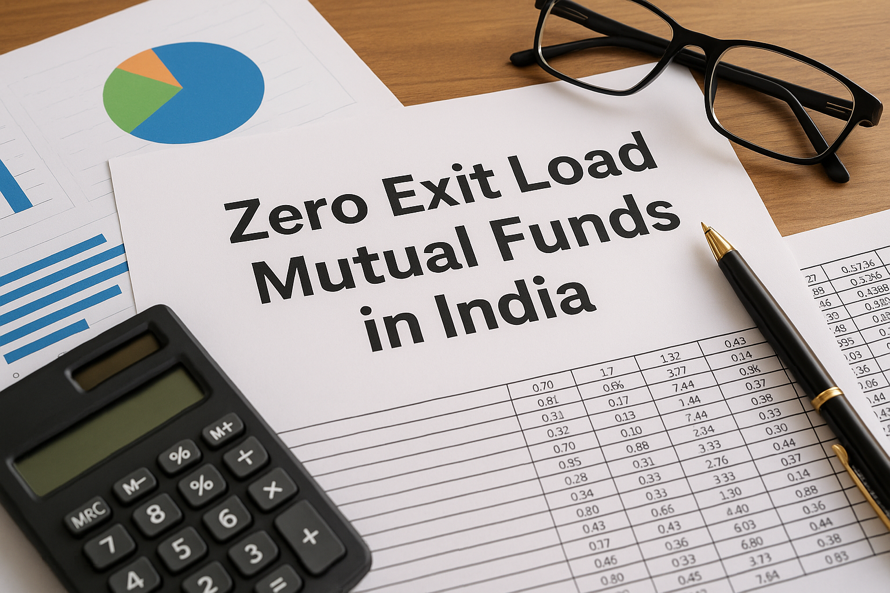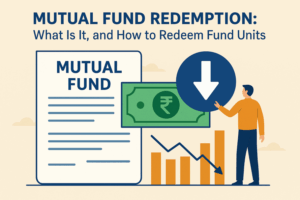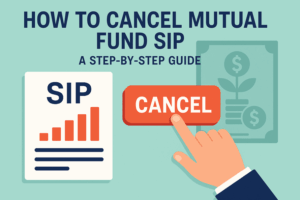SIP Calculator
×
Zero Exit Load Mutual Funds in India: A Smart Move for Flexible Investors

Key Takeaways
- Zero exit load = more flexibility, not necessarily more returns.
- Great for short-term goals, emergencies, and tactical portfolio moves.
- Watch for holding period rules and expense ratios.
- Best used as part of a diversified, thoughtful investment strategy.
If you’re looking to keep your investments liquid without paying a penalty for early exits, zero exit load mutual funds might be your best friend. But there’s more to them than meets the eye—and understanding the fine print could save you money and stress.
What Are Zero Exit Load Mutual Funds?
Zero exit load mutual funds let you redeem your investment without paying an exit fee—either from day one or after a short initial holding period (like 3 to 30 days). This makes them a great fit if you:
- Want fast access to your money
- Are building an emergency fund
- Plan to move money around for tactical investing
But be careful: “zero exit load” doesn’t always mean you’re fee-free immediately. Most of these funds apply a small charge if you exit within the first few days. After that? No penalty.
“Start investing with confidence! Explore the best
mutual funds
and grow your wealth.”
Why Do Exit Loads Exist in the First Place?
Exit loads are designed to:
- Discourage short-term trading
- Protect long-term investors from sudden outflows
- Help fund managers plan better
Think of them as a small speed bump—it forces you to slow down and think before making a quick move that could hurt your long-term returns.
Key Benefits of Zero Exit Load Funds
1. High Liquidity
You can get your money out quickly—sometimes even instantly (via IMPS up to ₹50,000/day in some funds). That makes these funds ideal for emergencies or short-term needs.
2. Cost-Efficient
No exit penalty means you keep more of your returns, especially if you need to withdraw within a few months.
3. Flexible Portfolio Management
Need to rebalance or switch strategies fast? No problem. These funds allow quick movement without the drag of fees.
4. Ideal for Short-Term Goals
From parking surplus cash to saving for a vacation or insurance premium, these funds give better returns than a traditional savings account without locking in your money.
The Flip Side: Risks and Things to Watch Out For
- Behavioral Risk: The freedom to exit anytime may tempt you to make rash, emotional decisions. Discipline is key.
- Lower Returns: Many zero exit load funds—like liquid or ultra-short debt funds—prioritize safety over growth.
- Not Always Risk-Free: Equity-oriented zero exit load funds still carry market volatility.
- Expense Ratio Still Applies: Even if there’s no exit load, the fund charges an annual fee. Choose direct plans to keep this cost low.
- Limited Selection: Not every investment strategy has a zero load option.
Popular Zero Exit Load Fund Types in India
Liquid Funds
- Short-term debt funds investing in treasury bills and commercial paper.
- Graded exit load structure (e.g., 0.0070% on Day 1, nil after Day 7).
- Offers instant redemption.
Top Picks:
- Aditya Birla SL Liquid Fund
- Edelweiss Liquid Fund
- Axis Liquid Fund
Short-Duration Debt Funds
- Hold securities for 1–3 years.
- Low or no exit load.
- Great for medium-term needs.
Index & Select Equity Funds
- Some index and equity funds offer short exit load windows (e.g., 0.25% within 3 days).
- Good for tactical plays with short horizons.
Examples:
- HDFC BSE Sensex Index Fund
- SBI Large & Midcap Fund
- Tata Banking & Financial Services Fund
SIPs, SWPs, and Exit Loads: What You Need to Know
- SIPs (Systematic Investment Plans): Each SIP installment has its own holding period. Use FIFO (First In, First Out) to withdraw older units first and avoid charges.
- SWPs (Systematic Withdrawal Plans): Time your withdrawals after the load period to get your money out without fees—and benefit from tax efficiency.
Tax Implications: Know Before You Exit
- Equity Funds:
- Short-term (<1 year): 15% tax
- Long-term (>1 year): 10% on gains over ₹1 lakh
- Debt Funds:
- Short-term (<3 years): Taxed at your income slab
- Long-term (>3 years): 20% with indexation
Note: Exit loads are subtracted before calculating capital gains, slightly reducing your tax base—but not enough to make paying them worth it!
How to Choose the Right Zero Exit Load Fund
Ask yourself:
- What’s my goal? Emergency fund? Parking idle cash? Tactical play?
- What’s my risk appetite? Stick to liquid funds for safety, or explore equity if you can handle some volatility.
- What’s the expense ratio? Lower is better—especially with direct plans.
- Who’s managing the fund? Look for a strong track record and high-quality portfolio.
- How has the fund performed over time? Past returns aren’t everything, but they do offer clues.
Best Uses of Zero Exit Load Funds
- Emergency fund with instant access
- Cash management for freelancers or small businesses
- Short-term savings with better-than-savings-account returns
- Temporary parking during market corrections
- Tactical shifts between asset classes
Conclusion
A zero exit load is great, but it shouldn’t be the only reason you choose a fund. Look at the full picture: risk, returns, expense ratio, your time horizon, and financial goals. That’s how smart investors build flexible, efficient portfolios.
FAQs
Q1. Are zero elxit load funds completely free?
No. You still pay an annual expense ratio. Some funds may even charge more here to make up for the lack of an exit fee.
Q2. Can I use zero exit load funds like a savings account?
Yes, especially liquid funds. But unlike savings accounts, they can fluctuate slightly and don’t offer guaranteed returns.
Q3. How do I know if a fund is truly “zero exit load”?
Always read the Scheme Information Document (SID). Look for any conditions or graded load periods.
Q4. Can I redeem SIP units without an exit load?
Only if those specific SIP installments have completed their individual holding periods.
Disclaimer
The stocks mentioned in this article are not recommendations. Please conduct your own research and due diligence before investing. Investment in securities market are subject to market risks, read all the related documents carefully before investing. Please read the Risk Disclosure documents carefully before investing in Equity Shares, Derivatives, Mutual fund, and/or other instruments traded on the Stock Exchanges. As investments are subject to market risks and price fluctuation risk, there is no assurance or guarantee that the investment objectives shall be achieved. Lemonn (Formerly known as NU Investors Technologies Pvt. Ltd) do not guarantee any assured returns on any investments. Past performance of securities/instruments is not indicative of their future performance.







